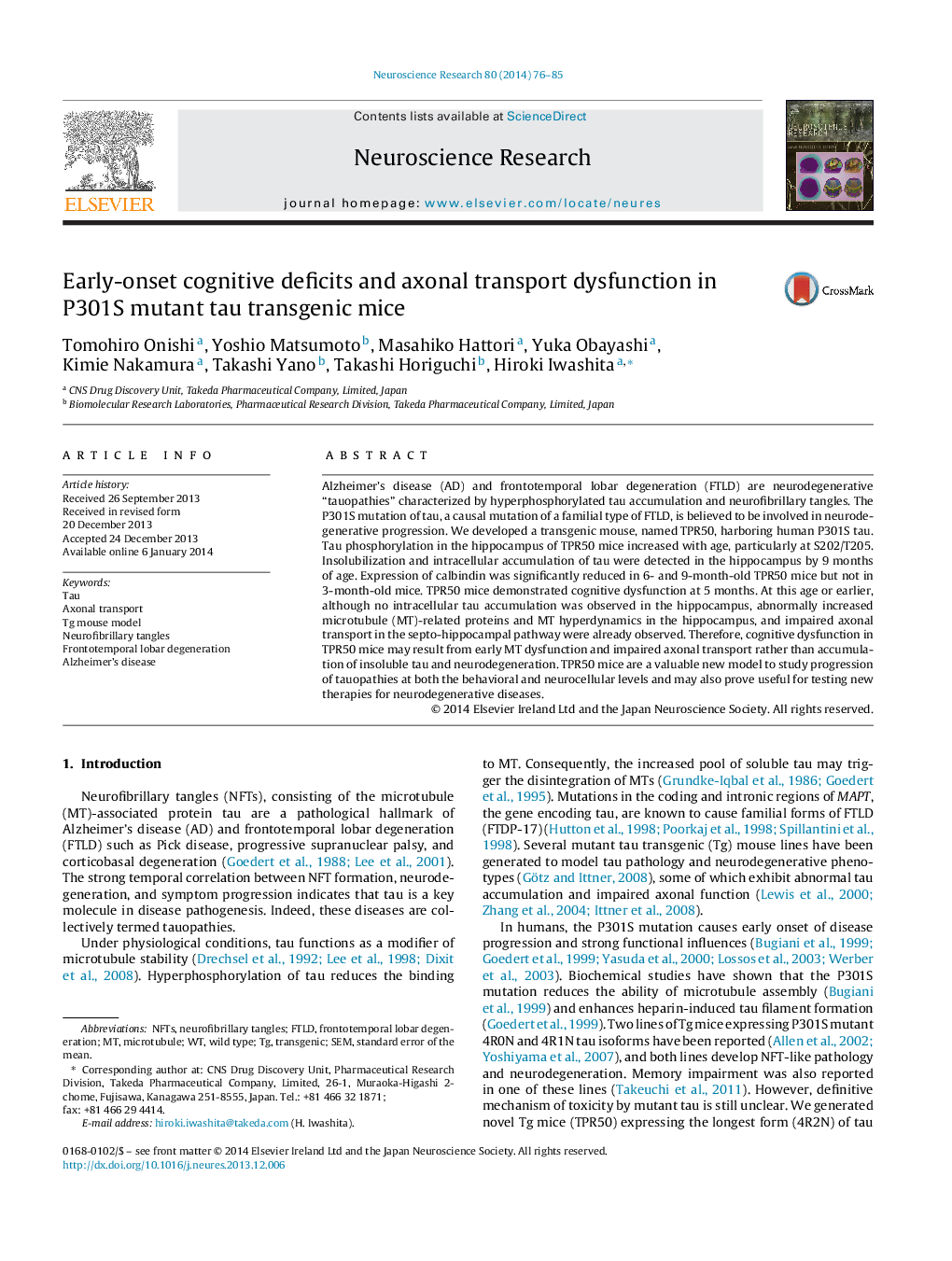| Article ID | Journal | Published Year | Pages | File Type |
|---|---|---|---|---|
| 4351460 | Neuroscience Research | 2014 | 10 Pages |
•We developed novel P301 mutant tau Tg mice named TPR50.•TPR50 mice showed progressive neurological anomalies modeling tauopathy.•Cognitive deficits and axonal dysfunction precede tau pathology in TPR50 mice.
Alzheimer's disease (AD) and frontotemporal lobar degeneration (FTLD) are neurodegenerative “tauopathies” characterized by hyperphosphorylated tau accumulation and neurofibrillary tangles. The P301S mutation of tau, a causal mutation of a familial type of FTLD, is believed to be involved in neurodegenerative progression. We developed a transgenic mouse, named TPR50, harboring human P301S tau. Tau phosphorylation in the hippocampus of TPR50 mice increased with age, particularly at S202/T205. Insolubilization and intracellular accumulation of tau were detected in the hippocampus by 9 months of age. Expression of calbindin was significantly reduced in 6- and 9-month-old TPR50 mice but not in 3-month-old mice. TPR50 mice demonstrated cognitive dysfunction at 5 months. At this age or earlier, although no intracellular tau accumulation was observed in the hippocampus, abnormally increased microtubule (MT)-related proteins and MT hyperdynamics in the hippocampus, and impaired axonal transport in the septo-hippocampal pathway were already observed. Therefore, cognitive dysfunction in TPR50 mice may result from early MT dysfunction and impaired axonal transport rather than accumulation of insoluble tau and neurodegeneration. TPR50 mice are a valuable new model to study progression of tauopathies at both the behavioral and neurocellular levels and may also prove useful for testing new therapies for neurodegenerative diseases.
